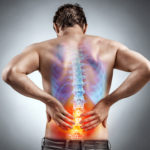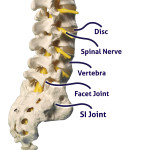Upper back pain is less common than low back and neck pain. This area of the spine provides general structural and stability for the rest of the body, and is where the ribcage attaches to the spine. The most common cause for pain in this area is muscle and ligament damage. Strain, nerve inflammation, bulging and/or herniated discs, facet pain, arthritis and spinal stenosis can also cause pain in the area.
Upper back pain is broken into two types, chronic and acute. Since this section of the spine protects vital organs, pain that starts suddenly and is intense and inexplicable (acute pain) may be a sign of a medical emergency. Patients experiencing this type of pain should seek medical treatment immediately. Long-term or chronic back pain can be caused by many different conditions.
To diagnose the cause of the patient’s pain, a physician will collect a medical history and perform a physical exam. The doctor may order a CT scan, MRI or X-ray to confirm the diagnosis.
Treatment will be dependent on the underlying cause of the pain. Some potential procedure options include medial branch blocks, selective nerve root blocks, discography, epidural steroid injections and facet injections. The doctor may also suggest the use of non-steroidal anti-inflammatories (NSAIDs), acetaminophen, muscle relaxants or membrane stabilizing medications.



